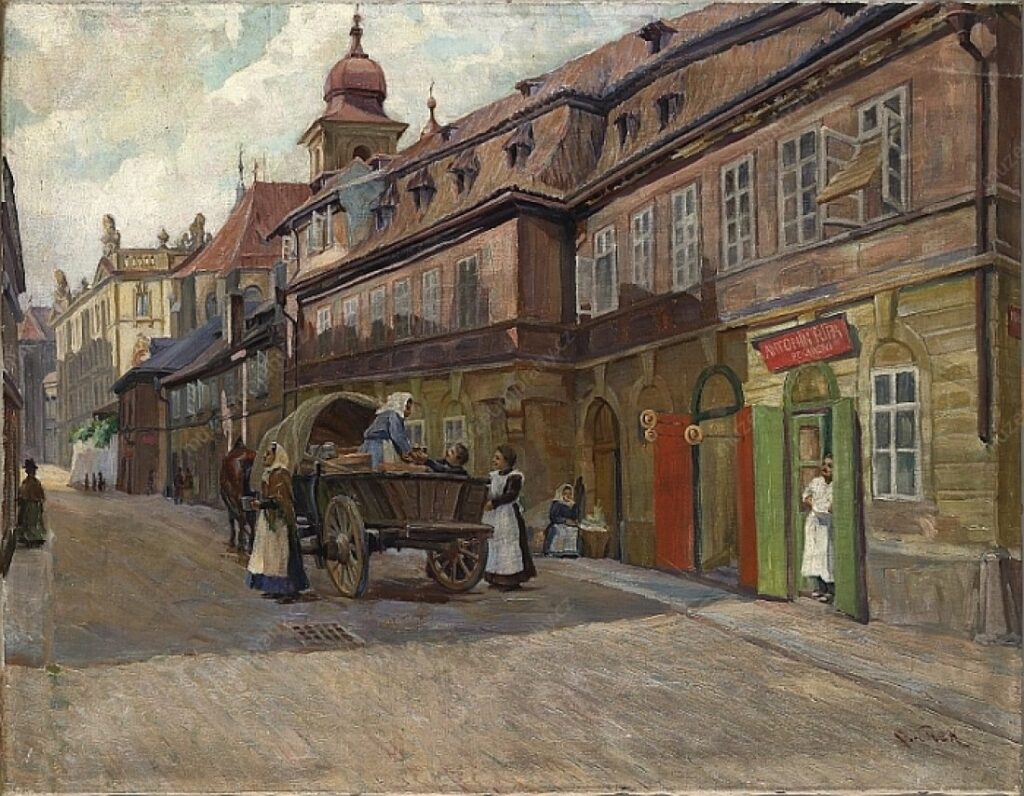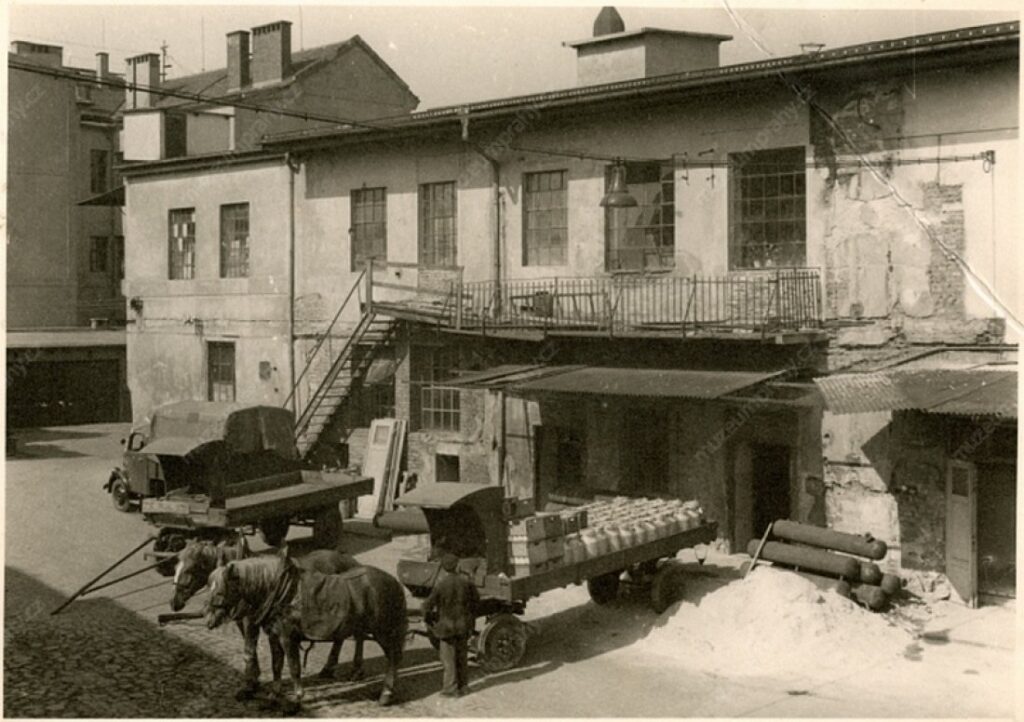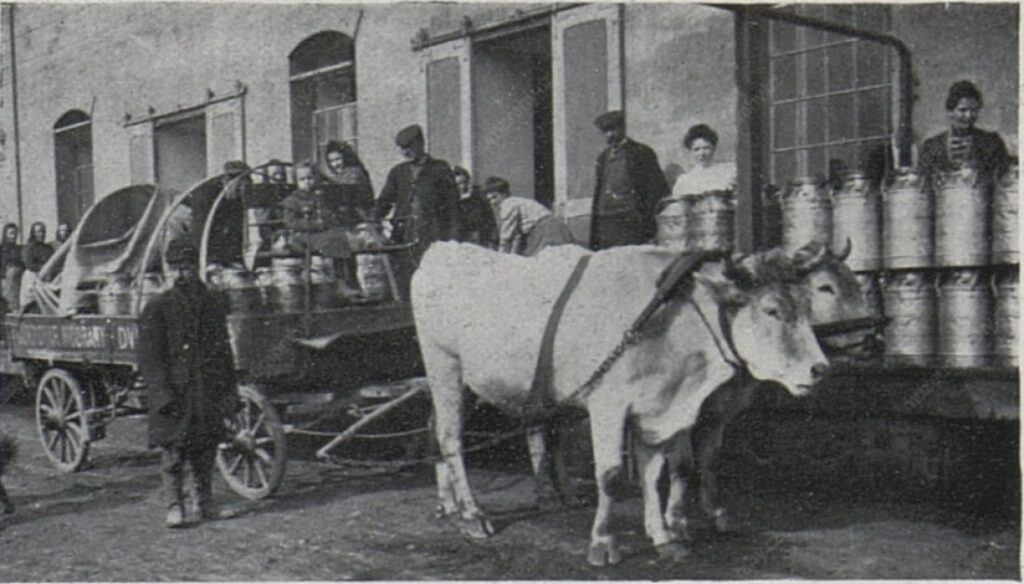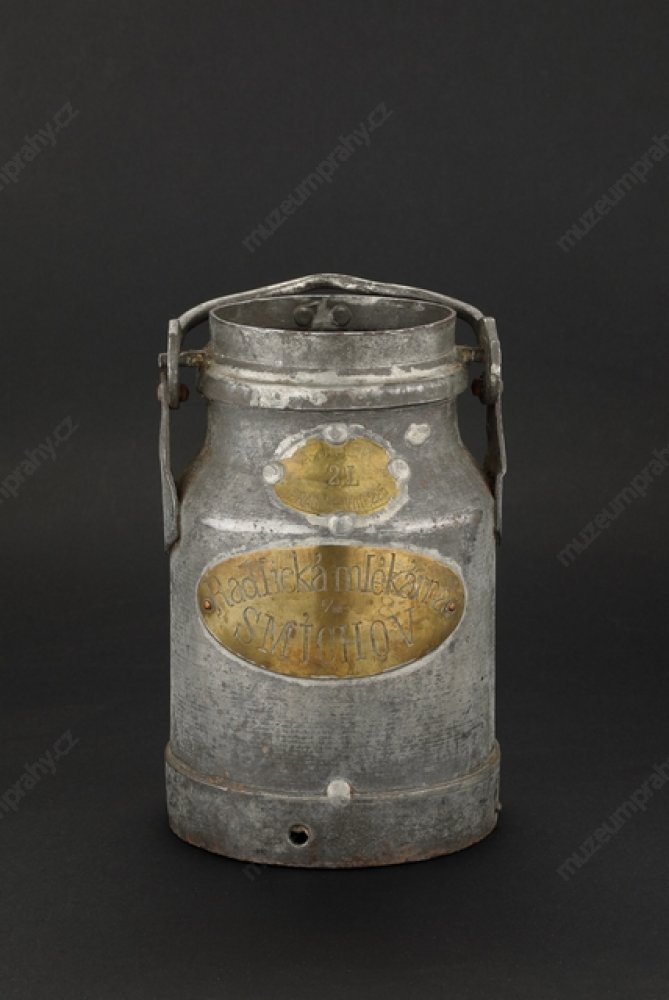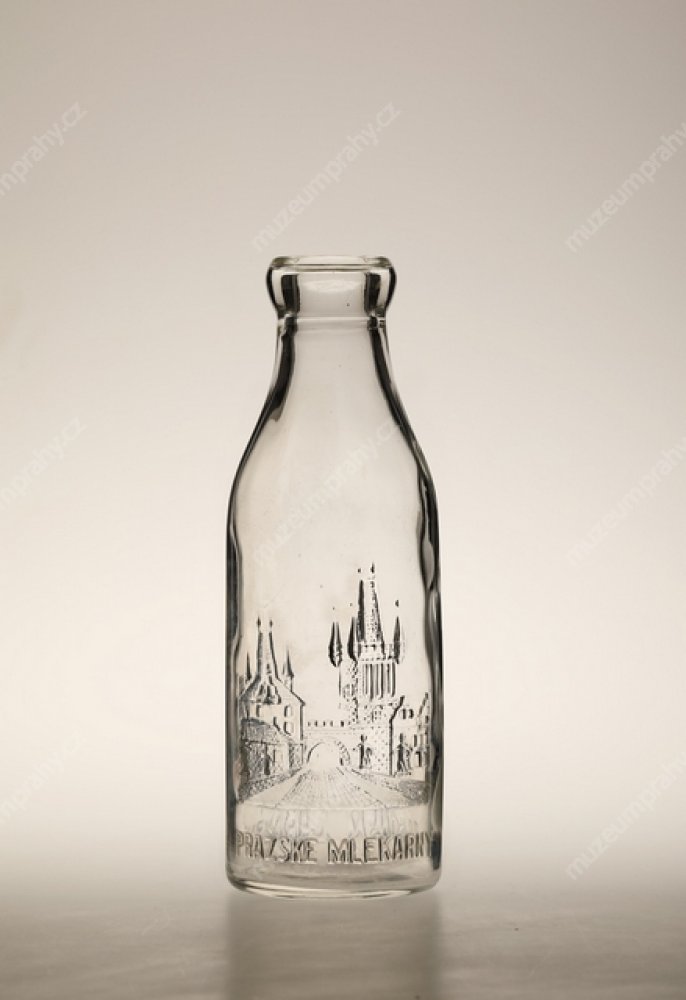Even seemingly simple and self-evident things had to first occur to someone. We’ll never know who the first prehistoric man was who was the first to put a piece of meat on a hot stone in a cave somewhere – but we do know that it was several hundred thousand years ago and that is how the first steak was made.
We don’t know which nomadic tribe thought to transport fresh milk in bags made of sheep and goat skins five or maybe even six thousand years ago – we do know, however, that due to that act where bacteria leached from the skins, the milk coagulated and thus the first yogurt was created.
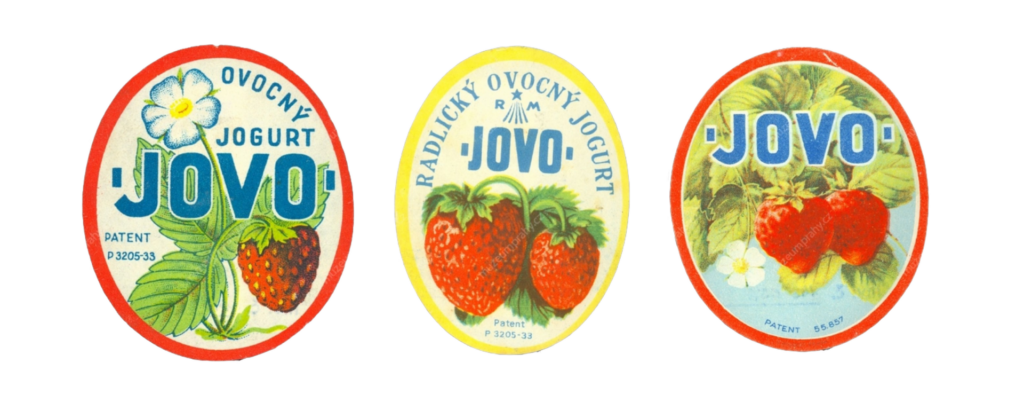
However, what we do know for sure is who was the first in the world to make fruit yogurt and why. Yes, it was in Prague – in 1933 in the Radlice Dairy. That’s when the dairy licensed this patent and started producing yogurt with two flavors – first with strawberry, then also with apricot. (The numbers of these patents are also written on the labels from that time.)
From Radlice to Dominating the European Market
The whole story began in 1872 on a farm in Radlice, a small village just outside Prague (since 1922, Radlice has been part of the Prague-5 district). At that time, the landowner Karl Kirschner bought the farm there from Johann Adolf II, Prince of Schwarzenberg, and converted it into a dairy, which, thanks to its size and the technology used, was the first industrial dairy in the Czech lands.
Karl Kirschner first processed milk from his farms, then also from other suppliers, but despite this, the amount produced soon ceased to meet the demand. His son, Karl Otto, therefore had a new dairy built in 1897. Even though the dairy continued to be called “Radlická”, the new building was built “under the hill”, opposite the railway station in Smíchov. This of course had a practical logistical reason – the milk was transported to Prague by train, the ewers were manually loaded onto wagons and transported just across the street to the dairy. The wagons were pulled by horses that were kept in stables right in the dairy (until 1953).
The new dairy was processing 30,000 liters of cow milk per day, later even 75,000 liters, with the prospect of increasing production up to 100,000 liters of milk per day. The Radlice Dairy had branches in other cities, even beyond the borders of the Austro-Hungarian Empire (i.e. France). Before the First World War, the Radlice Dairy was one of the largest enterprises of this type in Europe.
From Clay Pitcher to “Plastic Udder”
The beginnings of the dairy industry in the territory of Prague are closely related to the large increase in the number of its inhabitants in the second half of the 19th century. And that required a change in the existing food supply method.
The steep rise in milk production was of course also reflected in the way it was distributed. Until the second half of the 19th century, milk was brought to Prague in wooden buckets and clay jugs, usually loaded on carts pulled by dogs, with which milkwomen went round the city markets and shops in the morning. This method of supply was unsustainable for the ever-increasing population of the capital, and the fluctuating quality of the milk, which was not always of clear origin, also became a problem. Thus, at the end of the 19th century, wooden buckets gradually began to give way to closable watering cans, from which milk was poured for customers into the containers they brought with them.
It was not until 1934 that milk was sold in thick-walled glass bottles. Up to this time, the proportion of milk sold in bottles was not even 5%. The change was only brought about by the government regulation on compulsory pasteurization of milk, which was supposed to prevent the spread of tuberculosis.
And to make the history of milk distribution in Czechoslovakia complete, in the 1970s milk began to be sold in plastic bags. Whole milk in bags with red graphics, semi-fat with blue. (Some may recall that the bags were pejoratively called “plastic udders”.)
Marmalade Against Mould
For the Radlice Dairy, the ordered pasteurization of milk also had a significant commercial effect – a number of small, technologically inadequate dairies had to close, and their customers were naturally taken over by the Radlice Dairy, which had the required modern technology.
As the Radlice Dairy was very modern, its owners and technologists asked themselves also questions of principle. For example, how to prevent mold from forming on the surface of yogurt. The jars with white yogurt did not have well-sealing covers, with the penetrating air mold spores reached the surface of the yogurt (the spores are tiny, three times smaller than a pollen grain). Yogurt then spoiled quickly, staying fresh for only three days – and that was, of course, commercially disadvantageous.
That’s why the Radlice Dairy decided to put a layer of strawberry or apricot marmalade on the surface of the white yogurt to shield the fatty surface of the yogurt from air penetrating through the leaky cover. The bonus of this discovery was, in addition to the new taste, that the marmalade reduced the acidity of the yogurt.
What was originally invented for the protection of yogurt, then, with the compulsory pasteurization, lost significance. But since the yogurt with marmalade sold well, there was no need to retreat from its production. Newly, however, the marmalade was placed at the bottom of the glass, so that it did not run down the glass-walls, which could be less aesthetically appealing for some customers.
There was considerable interest in the license to produce fruit yogurt. 120 dairies bought it in Czechoslovakia. The license was soon sold to 15 European countries. License fees brought great profits to the Radlice Dairy, so it could expand its network of shops throughout Prague. Not only were the products of the dairy sold there, but people also liked to go there for breakfast or snacks at the milk bar.
Marie Štefányová’s Yogurt Cake
Ingredients for the Dough
5 eggs
25 dkg of icing sugar
35 dkg of semi-coarse flour
1 glass of oil
1 glass of milk
1 packet of vanilla sugar
1 packet of baking powder
1 teaspoon of cocoa
- Whisk the egg whites and half the amount of sugar into snow. You can add a few drops of vinegar for good whisking. (It’s important to whisk the egg whites first, because you can use the same whisk to whisk the yolks later. The reverse would not work, the whites would not then be whisked.)
- Whisk the egg yolks with the other half of the sugar and vanilla sugar.
- Whip the oil and a glass of milk into the whisked egg yolks (at lower speed so it doesn’t splash out).
- Mix in the flour and baking powder and cocao (sifted cocoa won’t form lumps) until it is evenly mixed. Then mix in the whipped egg yolk.
- Lightly stir in the snow from the egg whites.
- Put baking paper and a cake pan or a cake frame on the baking sheet and pour the mixture onto the baking sheet.
- Bake for 35-40 minutes at 170 degrees C. It is done baking when you lightly press the surface of the baked dough with your fingers and it “springs”. Take the corpus out of the oven and let it cool.
Cream Ingredients
½ liter whipped cream (33%)
0.5 kg white yogurt
1 packet of vanilla sugar
granulated sugar (to taste)
- Whisk the whipped cream (chilled, otherwise it will not be whisked). Before whisking, add sugar and vanilla sugar to the whipped cream (you can also add it to the whisked whipped cream, but it dissolves better this way).
- Add the yogurt and gently whip, or mix (so that the whisked cream does not beat, because then the mass would thin out).
- Remove the corpus from the cake frame, cover it with baking paper and put it back in the frame. This creates a “fence” for the cream layer. We apply the cream and put it in the fridge for approximately six hours so that the cream hardens sufficiently and the liquid from the whisked cream and yogurt soaks into the corpus.
Pudding Ingredients
½ liter of water (we don’t use milk like for ordinary pudding)
5 dkg pudding powder
10 dkg semolina sugar
a few drops of lemon (for taste)
food coloring (not necessary)
kiwi or any other fresh fruit cut into slices for decoration
- Mix the pudding powder in a small amount of water. Pour sugar into the remaining amount of water, add a few drops of lemon and bring everything to a boil.
- Place the chopped fruit on the surface of the cream and pour the pudding over it. Because the pudding is not cooked in milk, it is transparent even if we use food coloring.
Good Advice for Better Slicing of the Finished Cake
- cut with a knife that we soaked in warm water and then dried
- dip the knife in water again between each cut and wipe it so as not to contaminate the surface of the pudding with the cream from the previous “slicing”

A period movie about the Radlice Dairy.
Caption at time 33:41:
Processing milk into yogurt and surplus milk into butter, cheese and cottage cheese. Production of yogurt.
By the way – do you know why the Radlice Dairy had a logo with a stylized comet? In 1909, half of the world’s population suffered from the fear of a collision with Halley’s Comet. The others, on the contrary, believed that nothing fatal would happen and that it would bring them success. The Kirschners belonged to the latter, which is why they used the comet in their logo. And the success of the Radlice Dairy proved them right.















